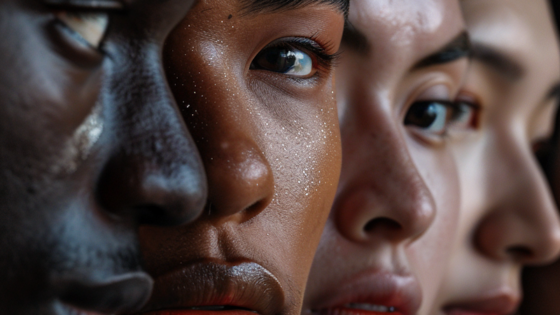on
BY SIMONE J. SMITH
“And you shall know the truth, and the truth shall make you free.” John 8:32
Regardless of your religion, or the God in which you choose to serve, many people who find refuge in gathering together have had their lives interrupted by this pandemic.
To some, it may not be a big deal, but for many, being able to gather with others who share the same spiritual beliefs can be beneficial. Psychology Today’s article on Religion (https://www.psychologytoday.com/us/basics/religion) found that having a spiritual belief can: increase optimism, resilience, while decreasing risk of depression, substance abuse, suicide, and risky behaviour.
For years, spiritual belief has brought people together who share the same values, giving them a sense of belonging and social support. It has offered comfort during hard times and provided an anchor for morality.
Now, imagine being that person who not only finds benefits from religious gatherings, but literally, for mental stability, needs to gather with others in order to function throughout their day to day. For the last ten months, they have been isolated. They have had to watch services from a screen, with no connection to those who brought them strength.
Religions are under attack, and the very people who are meant to uphold the laws of the land are ignoring the historic liberties and Charter freedoms of those who practice religions across the country. Do you know why? It is because many of us do not know the truth, and the truth is…
YOU HAVE THE RIGHT TO GO TO YOUR RELIGIOUS GATHERING PLACE TO WORSHIP!
“But Peter and John answered and said unto them, whether it be right in the sight of God to hearken unto you more than unto God, judge ye.” Acts 4:19 – King James Version (KJV)
This story is important for a few reasons, but the one that stands out the most is that as Canadian citizens, we have rights that many of us don’t know about. Don’t worry; it is not only the citizens that are unaware of certain laws, apparently police officers are also ignorant of certain laws that have been put in place to protect our rights and freedoms.
I had an opportunity to dialogue with Herbert Hildebrandt, the son of Pastor Henry Hildebrandt. Both father and son have been making headlines in the news lately for the powerful stance they have taken in respects to their right to worship with their congregation. If you get an opportunity, watch the interview with Kerry Lee Crawford and Pastor Henry that occurred on January 2nd, 2021 during the explosive The Awakening World Truth Summit. Pastor Henry took the time to go over what has been happening in his town of Aylmer, Ontario, and what he has done to ensure that his church flock still had the ability to worship despite the lockdowns.
My discussion with Herbert came about after I heard that Aylmer police had decided that they were going to ticket members of Pastor Henry’s church for attending services. I was very surprised when I heard that the police ticketed an 85-year-old woman for attending service and were actually sneaking and peeking through the family’s windows when they were eating so that they could issue fines for illegal gatherings.
Our discussion started with a quick outline of what had occurred to this point.
“In the spring,” Herbert told me, “we respected the fact that the government was doing what they thought was right for the people, so we were like, we are in this together. WE will wait to go to church.
We did the drive-in service for a while because it kept some semblance of normalcy. Then, things went well for the summer. Ontario opened back up, and we were able to have our services again. We kept drive-in, and in person services. What we found was that people were starting to visit our church from all over Ontario. It became what we termed, ‘The refuge church movement.’
Then the lockdown was reinforced, and all gatherings were prohibited. This did not stop Pastor Henry and his church. They continued to have services. Some mainstream media began to demonize Pastor Henry and his congregation. There were hit pieces put out about both Pastor Henry and Herbert, but this did not deter them.
A couple of Sundays ago Pastor Henry decided enough was enough and decided to hold service. He invited his flock out and reminded them that, “The Bible does not give me the power to tell you how, when and where to worship.”
What they didn’t realize was that the police were actually watching the live stream. The authorities cyber stalking allowed them to target 47 people that they would be ticketing in the upcoming week. The ticketing started last Tuesday. Their goal was to go door-to-door ticketing members of the church that were identified in the video. Out of the 47 people, only four people were ticketed.
When the ticketing blitz began, families warned other families about what was going on, and this is what allowed the other families to prepare themselves for the visit from the police.
It was at this point that Herbert hit me with some information that I did not know about.
“Every one who wilfully disturbs or interrupts an assemblage of persons met for religious worship or for a moral, social or benevolent purpose is guilty of an offence punishable on summary conviction”
176 (2) Criminal Code of Canada
“Police are not experts on the law,” Herbert began. “the Criminal Code is not something they are familiar with. Police officers are not trained on the Criminal Code, even though many of us think that they would be. We appreciate the police officers. They are obeying the re-opening of Ontario act, but they don’t know all the laws. Liberals tried to remove this section out of the Criminal Code, and it was fought against. I encourage people who want and choose to worship to know that WE have protection. It is our task and duty to educate the officers on what they don’t know, and that is what we do.”
I found this very interesting, so I decided to take a look at 176 of the Criminal Code. This is what I found:
176 of the Criminal Code
176 (1) Every person is guilty of an indictable offence and liable to imprisonment for a term of not more than two years or is guilty of an offence punishable on summary conviction who:
(a) By threats or force, unlawfully obstructs or prevents or endeavours to obstruct or prevent an officiate from celebrating a religious or spiritual service or performing any other function in connection with their calling, or
(b) Knowing that an officiate is about to perform, is on their way to perform or is returning from the performance of any of the duties or functions mentioned in paragraph (a)
(i) Assaults or offers any violence to them, or
(ii) Arrests them on a civil process, or under the pretence of executing a civil process.
Disturbing religious worship or certain meetings
(2) Everyone who wilfully disturbs or interrupts an assemblage of persons met for religious worship or for a moral, social or benevolent purpose is guilty of an offence punishable on summary conviction.
(3) Everyone who, at or near a meeting referred to in subsection (2), wilfully does anything that disturbs the order or solemnity of the meeting is guilty of an offence punishable on summary conviction.
Do you know what that means? It means that you have the right to worship, as long as you are doing it safely. If you are a minister or officer in the Church, you are free to carry out the duties pertaining to their office without hindrance or interference from any person or authority as affirmed and protected in section 176 of the Canadian Criminal Code, 2019.
There is now a movement that is slowly growing across Ontario. The Niagara Declaration 2020 (https://www.niagaradeclaration.ca/) is a national network of clergymen, elected officials, small business owners, legal experts, and other concerned citizens who are focused on bringing change for the good of all Canadians.
There is also the Liberty Coalition of Canada that has been formed to bring Canadians together. They have put together a declaration. It states their belief that churches and believers must continue to gather in person for public worship with or without the permission of civil authorities.
Over 400 individuals have signed it to date, and you can add your name today at https://www.libertycoalitioncanada.com/the-church-must-gather
Pastor Henry and his congregation have shown us that public worship is a non-negotiable principle. “We are not violent,” Herbert tells me, “but we will not comply. We are not going to make it easy.”
If you are interested in attending a service, they have scheduled drive-ins on Sundays at 10:30 am. It is time to take our freedoms back.
Stay in the loop with exclusive news, stories, and insights—delivered straight to your inbox. No fluff, just real content that matters. Sign up today!
We, as humans are guaranteed certain things in life: stressors, taxes, bills and death are the first thoughts that pop to mind. It is not uncommon that many people find a hard time dealing with these daily life stressors, and at times will find themselves losing control over their lives. Simone Jennifer Smith’s great passion is using the gifts that have been given to her, to help educate her clients on how to live meaningful lives. The Hear to Help Team consists of powerfully motivated individuals, who like Simone, see that there is a need in this world; a need for real connection. As the founder and Director of Hear 2 Help, Simone leads a team that goes out into the community day to day, servicing families with their educational, legal and mental health needs.Her dedication shows in her Toronto Caribbean newspaper articles, and in her role as a host on the TCN TV Network.












